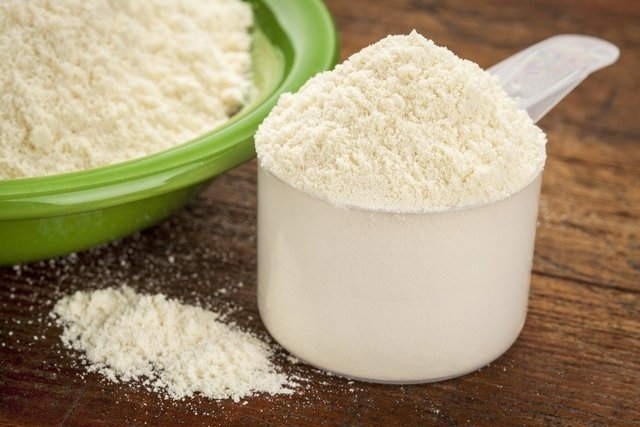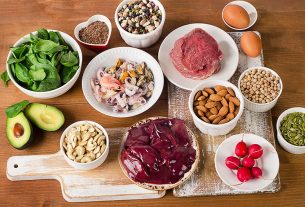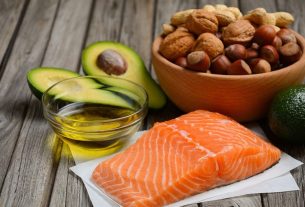Casein is the main protein present in cow’s, sheep’s or goat’s milk, and is rich in amino acids, such as tryptophan, leucine and valine, which stimulate muscle mass gain, and is normally prescribed for athletes and those involved in regular physical activity. .
Furthermore, casein has less fat than other protein supplements and takes longer to be digested, also helping with weight loss, controlling diabetes and high blood pressure.
Casein is naturally present in foods such as milk, cheese, cream and yogurt, but is normally recommended in the form of supplements, as it is more concentrated, which favors the desired results, such as hydrolyzed casein, micellar casein or calcium caseinate, which are found in health food and supplement stores.

What is it for
Casein is a supplement mainly used in supplement form by athletes and those who practice regular physical activity. Therefore, regular consumption of casein, which must be recommended by a nutritionist or nutritionist, serves to:
- Promote weight loss: the use of casein supplements contributes to weight loss, because this protein helps balance hunger and satiety hormones, controlling hunger;
- Facilitate muscle mass gain: casein does not interfere with burning fat at night, does not hinder the weight loss process and even stimulates muscle mass gain;
- Control and prevent diabetes: as it is a protein that reduces the absorption of food, casein helps to balance glucose and insulin levels in the blood, preventing and helping to control diabetes;
- It can help control high blood pressure: casein helps reduce levels of angiotensin-converting enzyme in the blood, an enzyme that is responsible for the contraction of blood vessels, which leads to increased blood pressure.
To obtain the benefits from using casein, it is essential to maintain a balanced diet and practice physical activity regularly.
Furthermore, before starting to use a casein supplement, it is recommended to consult a nutritionist or nutritionist to assess your current health status and individual goals.
How to take casein
The main recommendation is that casein is consumed about 30 minutes before bed, as hormones are produced at night that help with muscle mass gain. However, to control blood sugar levels, aid in weight loss and control high blood pressure, the supplement can be consumed throughout the day.
The amount of casein varies according to the objective, health status and individual physical activity practices, ranging between 0.8 and 2.2g/kg of body weight per day, which should be mixed with 200 ml of water or juice. fruits.
It is important to remember that, as it is a supplement, casein must be consumed with the guidance of a nutritionist or nutritionist.
Main types of Casein
The main types of casein supplements are:
1. Micellar casein
Micellar casein is the purest form of protein and is slowly absorbed in the intestine, helping to control hunger and glucose levels and increase muscle mass gain. It is a high quality protein, but it is more difficult to dissolve in liquids, so it is interesting to use a mixer or shaker to help dilute the supplement in water or juice.
2. Hydrolyzed casein
Hydrolyzed casein is made up of casein that has already been broken down into smaller sizes, which will facilitate and accelerate the absorption of the supplement. It is similar, but has an even slower absorption than hydrolyzed Whey Protein and a little faster than micellar casein.
3. Calcium caseinate
Calcium caseinate is a supplement made from skimmed milk casein, added with calcium hydroxide, a compound that helps dissolve the supplement. Typically, this supplement is easier to mix into juices and smoothies when compared to micellar casein and hydrolyzed casein, but it offers fewer health benefits.
Who cannot consume
The supplement should not be consumed by anyone allergic to casein protein, which is found in cow’s, sheep’s or goat’s milk, for example.
Bibliography
- BRASIL, B, Rafaella et al. Structure and stability of bovine milk casein micelles . Animal Science. Vol.25. 2.ed; 71-80, 2015
- FAKETE, A, Ágnes et al. Casein-Derived Lactotripeptides Reduce Systolic and Diastolic Blood Pressure in a Meta-Analysis of Randomised Clinical Trials. Nutrients. Vol.7. 1.ed; 659-681, 2015
- DRUM, Jorn et al. Casein Protein Processing Strongly Modulates Post-Prandial Plasma Amino Acid Responses In Vivo in Humans. Nutrients. Vol.12. 8.ed; 1-12, 2020
- ROMAN, A, Janesca; SGARBIERI, Valdemiro Carlos. Obtaining and chemical and nutritional characterization of different casein concentrates. Nutrition Magazine. Vol.18. 1.ed; 75-83, 2005
- B, Kung et al. Effect of milk protein intake and casein-to-whey ratio in breakfast meals on postprandial glucose, satiety ratings, and subsequent meal intake. Journal of Dairy Science. Vol.101. 10.ed; 8688-8701, 2018

Sign up for our newsletter and stay up to date with exclusive news
that can transform your routine!
Warning: Undefined array key "title" in /home/storelat/public_html/wp-content/plugins/link-whisper-premium/templates/frontend/related-posts.php on line 12
Warning: Undefined array key "title_tag" in /home/storelat/public_html/wp-content/plugins/link-whisper-premium/templates/frontend/related-posts.php on line 13





